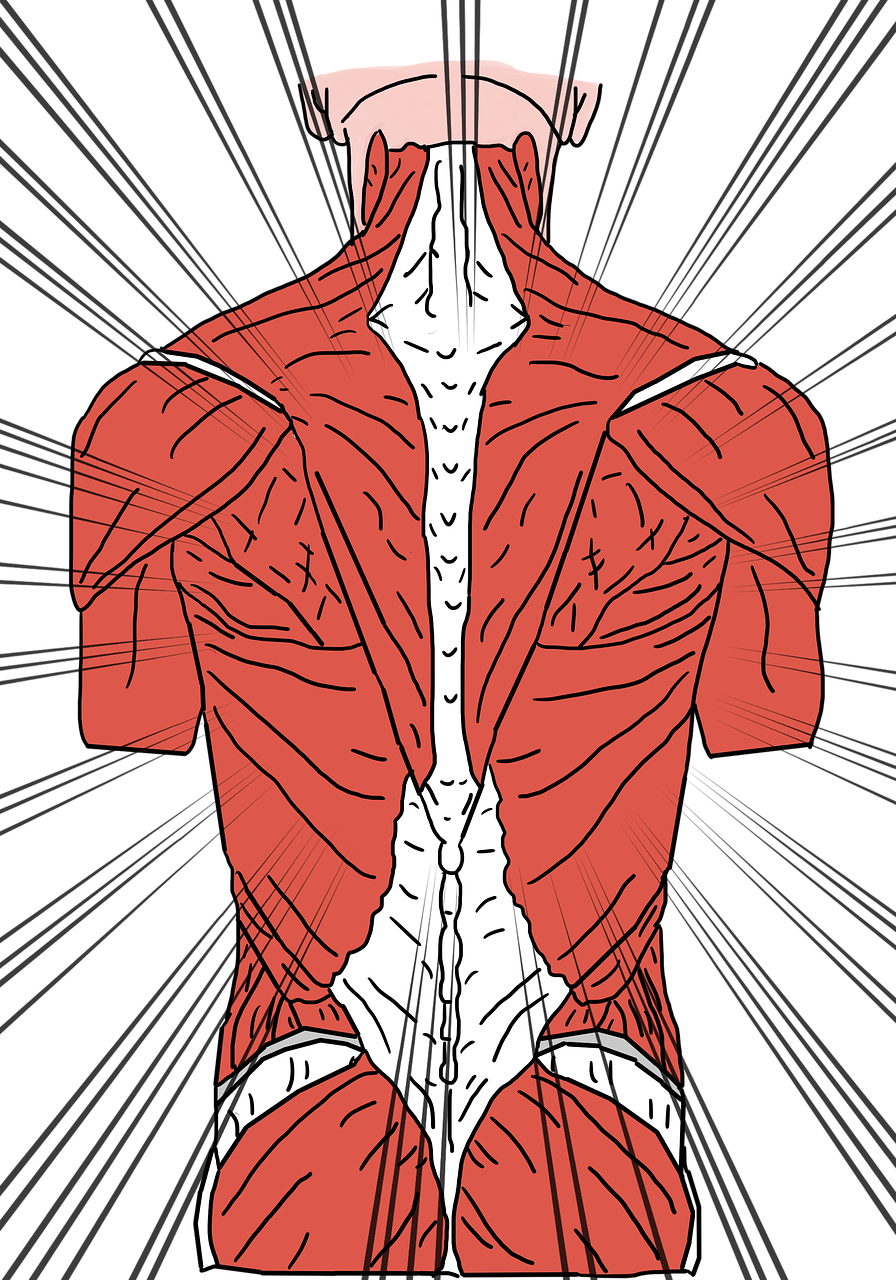
Having trouble getting a good night’s sleep due to irritating upper back pain? Look no further! In this article, we will unveil the four best sleeping positions for relieving upper back pain. Say goodbye to restless nights and wake up feeling refreshed and pain-free. Whether you prefer sleeping on your back, side, or stomach, we’ve got the perfect position tailored just for you. So, get ready to discover the ultimate relief for your troublesome upper back pain and prepare to experience rejuvenating slumber like never before.
Sleeping on your back
Overview
Sleeping on your back is often recommended as one of the best positions for relieving upper back pain. This position helps to distribute your body weight evenly, alleviating pressure on your spine and reducing strain on your back muscles. By maintaining a neutral spine alignment, you can minimize the risk of developing or exacerbating upper back pain.
How it relieves upper back pain
Sleeping on your back allows your spine to rest in a natural position, reducing the stress on your upper back. It helps to keep your head, neck, and spine aligned, allowing muscles to relax and easing tension in the upper back area. This position also prevents excessive twisting or bending of the spine, which can further aggravate upper back pain.
Tips for sleeping on your back
To optimize the benefits of sleeping on your back for upper back pain relief, here are a few tips to keep in mind:
- Use a supportive pillow: Choose a pillow that provides adequate support for your neck to maintain proper spinal alignment. A pillow of medium thickness usually works well for most people.
- Support your knees: Place a small pillow or rolled-up towel under your knees to help maintain the natural curve of your lower back and provide additional support to your spine.
- Use a firm mattress: A firm mattress can provide better support to your spine. Avoid mattresses that are too soft, as they may not provide enough support and can lead to more back pain.
- Keep your arms by your sides: Let your arms rest naturally by your sides or on your belly for increased comfort while sleeping on your back.
Precautions
While sleeping on your back can be beneficial for relieving upper back pain, it may not be suitable for everyone. People with certain medical conditions, such as sleep apnea or excessive snoring, may be advised to avoid sleeping on their backs. Additionally, if you experience discomfort or increased pain while sleeping on your back, it is important to explore other sleeping positions or seek medical advice.
Sleeping on your side
Overview
Sleeping on your side is another popular position for relieving upper back pain. This position can help to maintain the natural curvature of your spine and reduce pressure on your back, providing relief from discomfort.
How it relieves upper back pain
Sleeping on your side can help to align your spine and reduce stress on your upper back. By placing a pillow between your knees, you can further support your spine and keep it in proper alignment. This position also allows for better breathing and reduces the likelihood of snoring, making it a favorable option for overall sleep quality.
Tips for side sleeping
To ensure the best sleeping position for upper back pain relief when sleeping on your side, consider the following tips:
- Choose a supportive pillow: Use a pillow that adequately supports your neck and maintains a neutral spine alignment. A pillow of medium thickness that fills the gap between your neck and shoulder is generally recommended.
- Support your hips and knees: Place a pillow between your knees to alleviate pressure on your hips and keep your spine properly aligned.
- Use a mattress with medium firmness: A mattress that offers medium firmness can provide the ideal combination of support and comfort for side sleeping. Avoid overly soft mattresses that may cause improper spine alignment.
Precautions
While side sleeping is generally considered beneficial for upper back pain relief, there are a few precautions to keep in mind:
- Avoid sleeping on the same side every night to prevent muscle imbalances and strain on one side of your body.
- Be aware of excessive shoulder pressure: If you experience shoulder pain or discomfort while side sleeping, consider switching sides or exploring other sleeping positions.
- It may be necessary to experiment with different pillow sizes and placements to find the optimal support for your individual needs.

Sleeping in fetal position
Overview
Sleeping in the fetal position involves curling up with your knees drawn towards your chest. This position is known to provide relief for upper back pain, as it helps to elongate the spine and reduce pressure on the vertebrae.
How it relieves upper back pain
By sleeping in the fetal position, you can reduce the strain placed on your back muscles and encourage the natural curvature of your spine. The curled-up position allows your vertebrae to decompress, relieving any compression or tightness in the upper back area.
Tips for fetal position sleeping
To make the most of sleeping in the fetal position for upper back pain relief, consider these tips:
- Use a supportive pillow: Place a pillow between your knees to maintain proper alignment and reduce pressure on your hips. A thin pillow or folded blanket can provide the necessary support.
- Experiment with different levels of curling: Find the degree of curling that feels most comfortable for you. Some people may prefer a tighter fetal position, while others may find a looser curl more suitable.
- Ensure your neck is aligned: Use a pillow that supports your head and keeps your neck aligned with your spine. Avoid pillows that are too high or too flat, as they can strain your neck and upper back.
Precautions
While sleeping in the fetal position can alleviate upper back pain, precautions should be taken:
- Avoid excessive tightness: If you notice any discomfort or strain in your hips or lower back, consider using a larger pillow or adjusting the level of curling to reduce pressure.
- Extend your body periodically: Throughout the night, try extending your body and straightening your legs to prevent muscle imbalances and ensure optimal blood circulation.
Sleeping on your stomach
Overview
Sleeping on your stomach is generally not recommended for upper back pain relief. This position can strain your neck and spine, potentially exacerbating any existing pain or discomfort.
Why it may not be the best for upper back pain relief
Sleeping on your stomach can cause your head and neck to be twisted at an unnatural angle, which puts strain on the upper back and can lead to pain and stiffness. This position also tends to flatten the natural curvature of the spine, resulting in poor alignment and increased pressure on the back muscles.
Tips for stomach sleeping
If sleeping on your stomach is unavoidable, here are a few tips to help reduce strain on your upper back:
- Use a thin pillow or no pillow at all: Opt for a flat pillow or no pillow to minimize the strain on your neck and keep your spine as straight as possible.
- Place a pillow under your pelvis: By positioning a pillow under your pelvis, you can help maintain a more neutral spine alignment and alleviate some of the pressure on your back.
Precautions
While it may be challenging to completely change your preferred sleeping position, it is important to be aware of the potential drawbacks of stomach sleeping. If you experience persistent upper back pain or discomfort, it may be worth experimenting with other sleeping positions or seeking advice from a healthcare professional.

Using pillows for support
Choosing the right pillow
When it comes to providing proper support for your upper back during sleep, choosing the right pillow is crucial. Look for a pillow that conforms to your head and neck contours without allowing them to sink too deeply or tilt at an unnatural angle. Memory foam pillows or adjustable pillows are often recommended for their ability to offer personalized support.
Pillow placement for back sleeping
When sleeping on your back, it is essential to use a pillow that supports the natural curve of your neck and keeps your head aligned with your spine. Place the pillow underneath your head but ensure it does not elevate your chin too much, as this can strain your neck and upper back.
Pillow placement for side sleeping
For side sleepers, the pillow should fill the gap between your head and the mattress to maintain a neutral spine alignment. This can help prevent your head from tilting downward or upward, which can put stress on your neck and upper back. Also, consider placing a thin pillow or rolled-up towel between your knees to further support your spine and reduce strain on your back.
Pillow placement for fetal position sleeping
When sleeping in the fetal position, use a pillow between your knees to maintain proper alignment and reduce pressure on your hips and lower back. Additionally, choose a pillow that supports your head and keeps your neck aligned with your spine to prevent any unnecessary strain on your upper back.
Additional tips for sleeping with upper back pain
Maintain a good sleep posture
Aside from finding the right sleeping position and using supportive pillows, maintaining good sleep posture is essential for relieving upper back pain. Avoid twisting or bending your spine unnaturally while sleeping and try to maintain a neutral spine alignment.
Invest in a supportive mattress
A supportive mattress plays a crucial role in promoting proper spinal alignment and relieving upper back pain. Look for a mattress that suits your individual preferences and provides adequate support to avoid excessive sinking or sagging, which can lead to increased discomfort and pain.
Stretching before bed
Incorporating gentle stretching exercises into your bedtime routine can help relieve muscle tension and enhance flexibility in your upper back. Focus on stretching your neck, shoulders, and upper back to target any areas of tightness or discomfort. Consult with a healthcare professional or physical therapist for specific stretching exercises tailored to your needs.
Applying heat or cold therapy
For temporary relief of upper back pain, applying heat or cold therapy can be beneficial. Take a warm shower or apply a heating pad to the affected area to soothe tight muscles and improve blood flow. Alternatively, you may find relief by using a cold pack or an ice pack wrapped in a towel to reduce inflammation and numb the area.

When to seek medical advice
Persistent or worsening pain
If your upper back pain persists or worsens despite trying different sleeping positions or implementing supportive measures, it is important to seek medical advice. Persistent pain may indicate an underlying issue that requires medical attention, such as a herniated disc or muscle strain.
Accompanying symptoms
If your upper back pain is accompanied by other symptoms such as numbness or tingling sensations, weakness, or shooting pain that radiates down the arm, it may be indicative of a more serious condition. Consult with a healthcare professional to determine the underlying cause and appropriate treatment.
Underlying conditions
It is important to consult with a healthcare professional if you have been diagnosed with an underlying condition, such as a spinal injury, arthritis, or osteoporosis. These conditions may require specialized sleeping positions or additional support to effectively manage upper back pain.
Exercises to relieve upper back pain
Upper back stretches
Performing upper back stretches can help alleviate tension and improve flexibility in the upper back area. Examples of stretches that target the upper back include shoulder rolls, cat-cow stretch, and thoracic spine extensions. Remember to perform these exercises gently and gradually increase intensity as tolerated.
Upper back strengthening exercises
Strengthening the muscles in your upper back can provide additional support and stability, reducing the risk of upper back pain. Exercises such as rows, pull-ups, and reverse flyes can help target the muscles in your upper back and improve overall strength.
Yoga poses for upper back relief
Yoga can be a beneficial practice for relieving upper back pain and promoting overall flexibility and relaxation. Some yoga poses that specifically target the upper back area include the cat-cow stretch, child’s pose, cobra pose, and thread the needle pose. Remember to listen to your body and modify poses as needed to suit your comfort level.
Maintaining a healthy lifestyle for back health
Regular exercise
Engaging in regular exercise not only improves overall fitness but also promotes back health. Engaging in activities such as swimming, walking, or low-impact aerobics can help strengthen the muscles supporting your upper back and reduce the risk of pain and injury.
Maintaining a healthy weight
Excess weight puts additional strain on your spine and can contribute to upper back pain. Maintaining a healthy weight through a balanced diet and regular exercise can help reduce the burden on your upper back and promote optimal back health.
Proper nutrition
Eating a well-balanced diet that includes sources of essential nutrients, vitamins, and minerals is crucial for maintaining healthy bones, muscles, and connective tissues. Ensure your diet includes foods rich in calcium, vitamin D, and other nutrients that support bone health.
Avoiding prolonged sitting or standing
Prolonged sitting or standing in one position can strain your upper back. If you have a sedentary job, make a conscious effort to take regular breaks and incorporate stretching exercises throughout the day. If your job requires standing for long periods, try to shift your weight and change positions regularly to avoid excessive strain on your back.
Conclusion
Finding the best sleeping position for upper back pain relief is crucial for maintaining optimal spinal alignment and reducing discomfort. Experimenting with different sleeping positions and using supportive pillows can greatly alleviate upper back pain. Remember to consult with a healthcare professional if you experience persistent or worsening pain, or if you have an underlying condition that may require specialized guidance. By incorporating additional tips, exercises, and maintaining a healthy lifestyle, you can prioritize your back health and enjoy a good night’s sleep.





